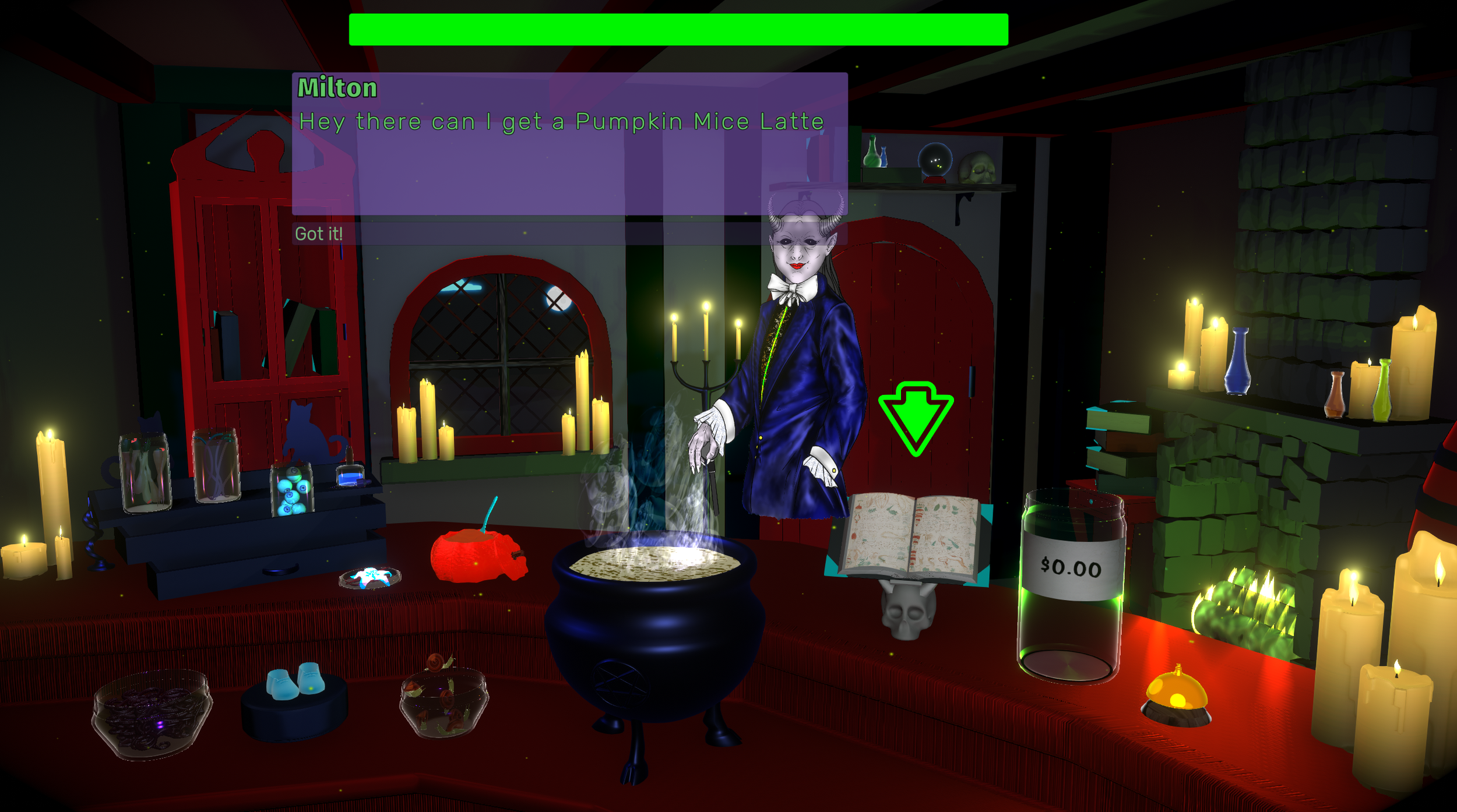Witches Brew
About the project
Witches Brew was the first team game I worked on and as the creative director for the project it holds a special place in my heart. Witches Brew is a fixed perspective 3D unity game in which the player receives an order from a customer, checks the recipe book, then drags the correct ingredients into the cauldron all the while answering questions from the customer in a set amount a time so as to receive a tip and get a high score.
My Role
The pitch, mock up, and paper prototype for this project were my responsibility. Throughout the sprint I also directed various creative and gameplay decisions and assisted with implementation. The customer dialogue/ordering/tipping system was completely my responsibility as well.
Features I Worked on
Creative direction
Original Pitch:
Drawing inspiration from my own experience as a barista and from games like “VA-11 Hall-A“ and “Coffee Talk“ I pitched the idea of a spooky coffee sim as a project that would be within the scope of our experience and achievable in the time we had. Right away I drafted a mock-up in Photoshop and we worked out possible features and their requisite mechanics. It was at this time I pitched the customer conversation system which gives players more responsibilities to complete within the set amount of time. As well as adding challenge it was also a great way to add flavor to the game and give other less technically skilled members of our team an opportunity to contribute via written dialogue, audio, and art.
Design Documents:
Mock-up Pitch Document Sample Dialogue Tree From Writers Brainstorm File
customer interaction system
Conversation and Tip Value:
Using a series of animated text boxes each customer in turn pulls a drink to make and conversation tree from the “Order Manager“ GameObject and attached Class. These recipes and possible conversation trees are serialized fields and pull from a list of possible options that can be updated at any time. As the round begins a timer visible on screen begins to count down this timer and the choice the player makes in the conversation tree are what effect the tip outcome for that round. Over the course of development this system changed a few times to make it more clear whether the player chose correctly or incorrectly in the conversation tree. By randomizing the order in which the responses would appear and using audio cues to denote positive or negative outcomes we were able to successfully create the behavior we were looking for in testing. Once players understood that the way they interacted with the customer effected their score the way they played and their final score moved to match what our balancing models were looking for.
download here
Tools
Communication: Microsoft Teams
Engine: Unity 2019.4.10f1
Version Control and Kanban Board: GitHub
Hosting: Itch.io
3D Assets: Maya



